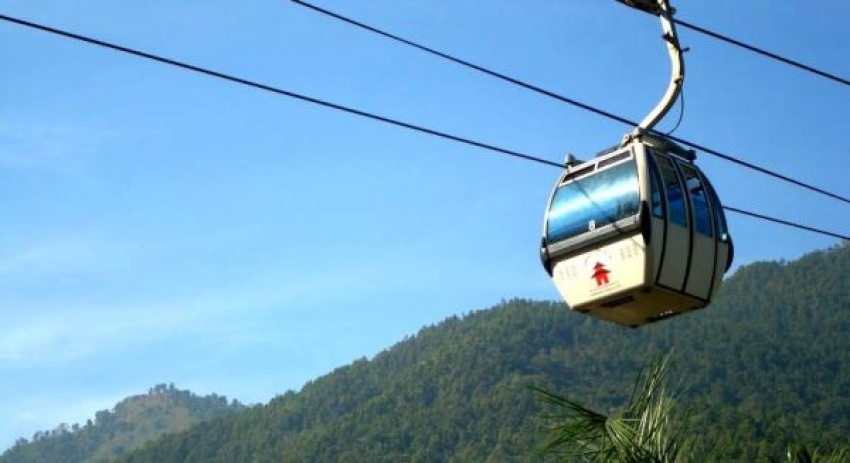
Cable car would make access to mount Karisimbi summit easy
By 2025, Rwandans and visitors could start navigating the capital Kigali on aerial cable cars – saving them from growing traffic issues in land transport means.
Despite injecting 80% of its annual budget to expand infrastructure projects such as road network, City of Kigali faces a growing issue of traffic – and cable cars could be the next alternative for transport.
Researchers have predicted a serious traffic issue in the capital Kigali between 2025 and 2040 if nothing is done ahead.
To deal with the issue, City of Kigali has held discussions with two cable car infrastructure developers; South African-based POMA Company and Doppelmayr – which operates in France and Germany to work on a project to establish the technology-based transport.
“These companies approached us and we discussed how the project can be executed based on available means,” Eng. Jean d’Amour Rwunguko – head of transport in the City of Kigali told KT Press.
“City of Kigali is one of the hilliest cities. This is the fastest means of transport that will even reduce on the traffic jam around the city,” Eng. Rwunguko added.
Together with city authorities, the companies have identified potential hills around the city that could be used for infrastructure.
Some identified include Rugenge, Gisozi and Mt. Kigali hills where cable cars infrastructure will be established.
According to Eng. Rwunguko, the new Cable Cars project is not only faster but cost effective compared to construction of roads.
In August last year, Rwanda’s State Minister in the Ministry of Foreign Affairs, Amb. Olivier Nduhungirehe was seen testing Cable Cars while on a trip to Singapore where he said it was the right time for the country to implement the project.
“Testing cable cars in Singapore. Safe and reliable, they can easily connect any part of our hilly capital to another. The future is now!” Minister Nduhungirehe tweeted then.
Currently, the two companies are designing technical proposals for the City of Kigali, and according to Eng. Rwunguko, there is hope that the project will be executed.
The World Bank advises cities that are considering investing in a cable car system ‘to carefully’ consider the advantages and limitations of the technology.
The bank suggests that the unique advantage of cable cars is their ability to climb steep hills at a fraction of the investment cost of a new tunnel or bridge.
They are also often faster to implement than building new roads, which can appeal to decision-makers looking to show results quickly.
Capital costs can vary widely depending on the context, with most Latin American systems ranging between $10-25 million per km.
Mobility and Accessibility.
The recent cable car projects that have received the most attention are those serving poor hillside neighborhoods, many of which were poorly connected to the rest of the city and underserved by conventional transport services.
Connecting hilly areas to urban centers by aerial cable cars can bring considerable travel time saving and other socio-economic benefits due to direct linkages and the absence of constraints from road traffic, the report by World Bank says.
According to this World Bank report, the data compiled from 25 projects in 14 cities around the world shows that urban cable cars have an average route lengths of 2.7km, operating speeds of 10 to 20 km per hour, and typical operating capacity of 1,000-2,000 passengers per hour per direction.
Cable cars have the benefit of giving commuters a “ride with a view,” but they also need high standards of comfort, safety, and security in order to remain popular over time. A well-designed system can also improve the quality of urban space around stations and stimulate urban regeneration.

